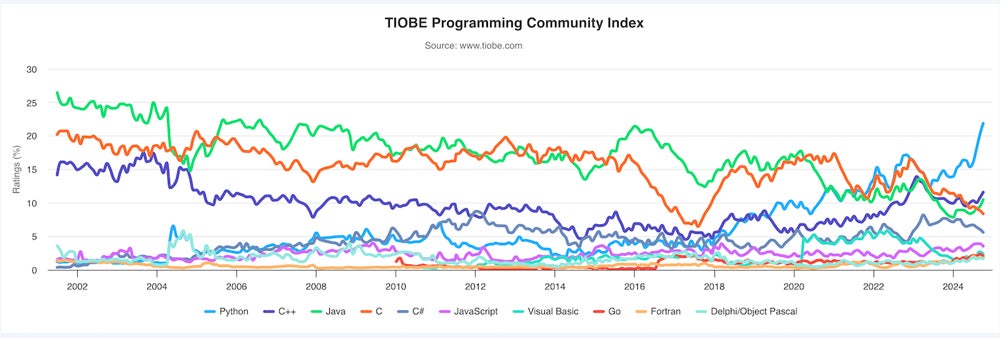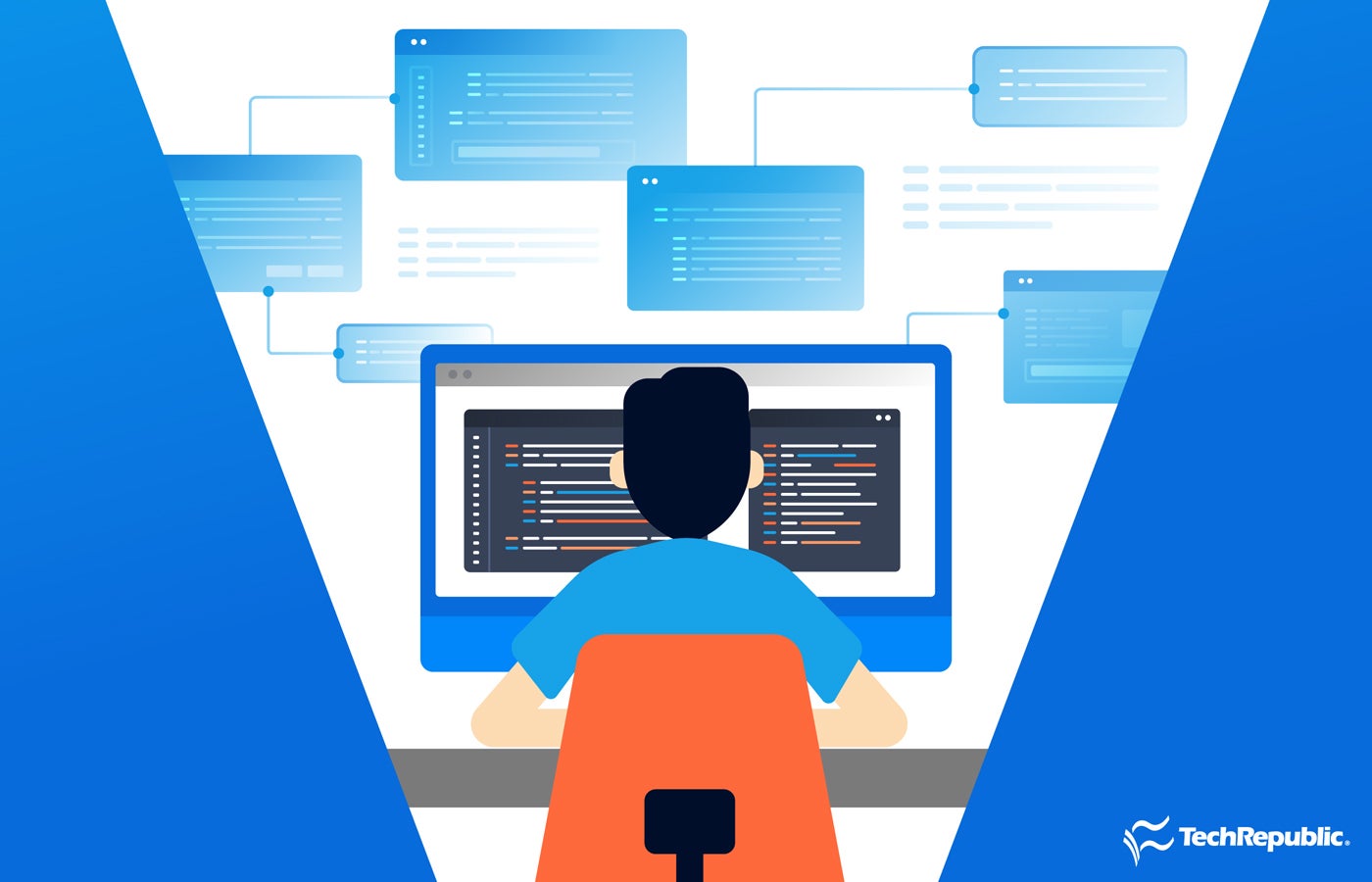The Evolution of Python and Its Rivals: Insights from the TIOBE Index
The programming landscape is a dynamic environment, a theatrical stage where languages vie for attention, and none has dominated quite like Python. Yet, as we look at the October 2024 TIOBE Programming Index, a few trends emerge that beckon a closer inspection.
 Recent trends in programming languages, highlighting the rise and fall of various contenders.
Recent trends in programming languages, highlighting the rise and fall of various contenders.
Python’s Continuous Rise
Python’s ascendance is unparalleled in the tech world. The language’s simplicity and versatility make it an ideal choice for beginners and experts alike. In October 2024, Python reportedly surged to an impressive 21.9% of the market share, showcasing its robust demand among developers. This growth aligns with an increasing interest in data science and machine learning, fields where Python excels.
The TIOBE Programming Community Index, a barometer of language popularity based on search engine results, indicates that Python continues to reign supreme, ahead of other popular languages such as C++ and Java, which account for 11.6% and 10.51%, respectively. Paul Jansen, CEO of TIOBE Software, underscored the importance of languages that facilitate data manipulation, are fast, and are easy to learn. This budding demand reflects a critical skills gap within the industry, necessitating programming languages to adapt and evolve rapidly.
The Emergence of Mojo: A Swift Challenger
The programming community’s love affair with Python faces an exciting challenge in the form of Mojo, a language that debuted just last year. Created by Chris Lattner, Mojo has swiftly made its mark, entering the TIOBE Index in 49th place. Unlike its predecessors, Mojo is designed to offer speed for AI hardware programming while still appealing to Python users.
Mojo embodies the promise of blending speed with accessibility. Its entry into the top 50 highlights an underlying trend among developers searching for languages that combine the fluidity of Python with performance optimizations akin to lower-level languages. As the quest for efficiency continues amid growing data demands, Mojo’s development could be timely and relevant.
Understanding the Language Landscape
As existing and new languages continue to develop, programmers are faced with abundant options. The rapid evolution of programming languages serves not merely as a reflection of personal preferences but as a collective reaction to market needs. The surprising upswing of Mojo, alongside enduring favorites like Python, indicates an ongoing dialogue about what makes a programming language not just functional but vital.
 Traditional and emerging programming languages are part of a critical conversation in tech.
Traditional and emerging programming languages are part of a critical conversation in tech.
Wordle and the Power of Novelty
While programming languages battle for supremacy, a different kind of competition has captivated the hearts of millions: the phenomenon known as Wordle. Launched in late 2021, this deceptively simple word game quickly became a cultural darling, illustrating the allure of straightforward yet engaging challenges. Wordle’s success is rooted in its accessibility; after all, who can resist the charm of guessing a five-letter word within six tries?
Crafting a Wordle Game
For aspiring developers eager to create their own version of Wordle, the process comprises just a few components: a word list, gameplay logic, and a user-friendly interface. Notably, the choice of programming language can vary:
- JavaScript lends itself well for web apps.
- Python might be a wonderful starting point for a command-line version.
- Swift and Java cater to mobile platforms, allowing wider dissemination across devices.
Building a Community Engagement Platform
The magic of Wordle lies not just in its gameplay but in its social mechanics. Players can share their results on social media, fostering connection and camaraderie among friends. This feature solidifies Wordle’s place not merely as a game but as a shared experience—a captivating aspect that contemporary digital interactions often miss.
The Intersection of Technology and Recreation
Ultimately, the intertwining narratives of programming languages and social games like Wordle underscore the evolving relationship between software development and human interaction. The changes reflected in the TIOBE Index and the viral success of games shed light on crucial ideas: flexibility, community, and adaptability.
As we wade deeper into an uncertain technological future, these threads of connection will become increasingly pronounced. Developers are not just building for functionality; they’re weaving experiences, catering to the human desire to connect while solving problems or engaging in leisurely play.
Final Thoughts
As we reflect on the trending indicators and growing programming languages, one conclusion becomes clear: the world of tech is constantly changing. From Python’s stronghold to Mojo’s rise and Wordle’s cultural significance, the interplay of programming languages and recreational platforms illustrates a compelling landscape of innovation.
Now more than ever, seasoned developers and newcomers alike should embrace this evolving spectrum to not only stay relevant but enjoy the journey that lies ahead.


 Photo by
Photo by 












